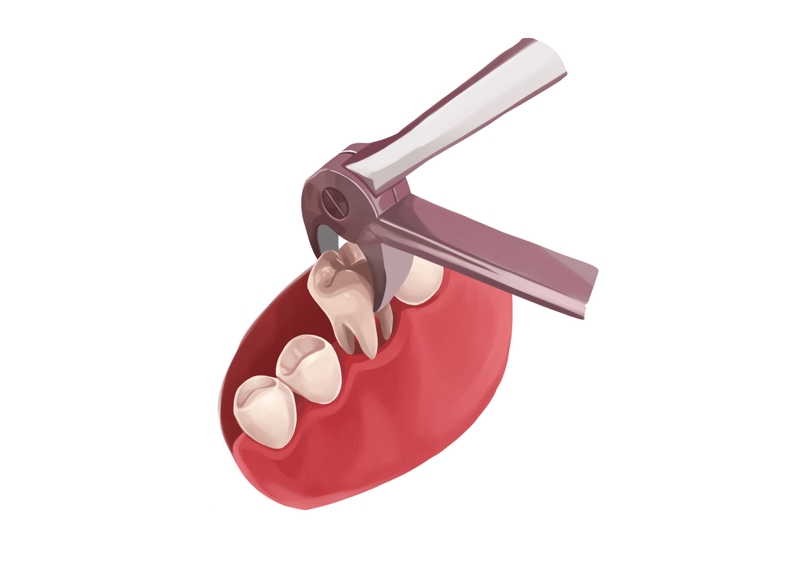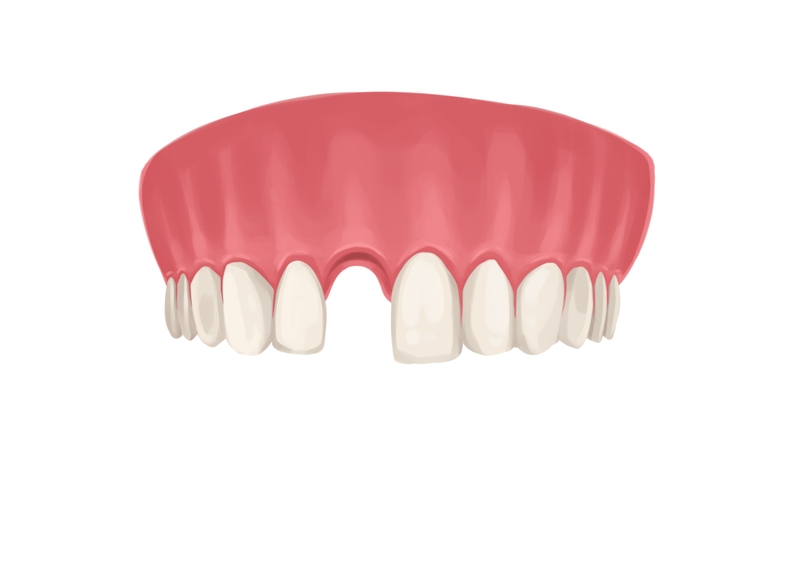- Dry socket or alveolar osteitis is the most common complication after tooth extraction. It occurs when a blood clot fails to form or becomes dislodged.
- You can develop a dry socket if you do not follow aftercare instructions, smoke or chew tobacco. Other common causes include bacterial contamination and trauma.
- Symptoms of a dry socket range from pain in the affected area to discomfort in the jaw and neck to inflammation in the mouth. Your doctor may prescribe over-the-counter pain medications to treat a dry socket.
Need professional treatment for dry socket? Use Authority Dental to find emergency dental offices in your city. It’s simple, secure and free.
Just had your tooth extracted and worried about a dry socket? Here's everything you need to know.
What causes a dry socket?

Picture by Authority Dental under CC 2.0 license
The prevalence rate of dry sockets is about 1-5% of those who recently had a tooth pulled. Interestingly, if the extraction pertains to lower wisdom teeth, the chances rise to about 38%.
Other than that, the most common dry socket causes include:
not following aftercare instructions,
smoking or chewing tobacco,
bacterial contamination, and
trauma.
Smoking and chewing tobacco are bad due to irritants and toxins. Nicotine also constricts blood vessels and decreases blood flow which is important in healing.
Bacterial contamination may occur if you’ve had snacks or drinks after the blood clot was dislodged. Poor oral hygiene can also be the culprit.
Trauma happens if you poke the socket with your toothbrush or food. Sucking through straws and vigorous brushing or rinsing can also dislodge the blood clot.
The risk of getting a dry socket is increased by taking oral contraceptives, previous dry socket or periodontal disease, being over 25, and a complicated extraction. Oral contraceptives introduce high levels of estrogen into the oral cavity. This may disrupt normal healing processes. What follows is that dry socket is more common in women than men.
If you’ve had a dry socket before, it is likely to occur again. Let your dentist know. This might not help prevent it but will speed up diagnosis and treatment.
Dry socket symptoms
If you have a dry socket, pain in the affected area will be the most noticeable of signs.
You may also experience the following symptoms:
significant discomfort in the jaw, neck, or ear region,
a dry opening instead of a dark clot in the extraction site,
unpleasant taste,
dullness of the jaw, and
inflammation in the mouth.
These usually appear about 3-7 days after the extraction. Dry socket signs are pretty obvious, so it’s rare that the issue is misdiagnosed.
How to treat dry socket?

Picture by Authority Dental under CC 2.0 license
At first, you may want to start at home. Dry socket almost always heals on its own. t’s all about how willing you are to experience pain.
Home remedies
If you feel pain 2-3 days after an extraction, use a saltwater rinse to gently disinfect the area. Make sure not to swish it around too vigorously, as this may worsen the problem.
Bite gently on a gauze pad or a teabag to manage the bleeding. You can also take anti-inflammatory painkillers such as ibuprofen or aspirin.
If you are still experiencing pain or swelling after 5 days, report to your dentist. OTC products may not be enough.
Professional treatment
The first step is cleaning the area to remove any food debris or bacteria. A numbing gel may be used to make this less painful.
Your dentist will cover the extraction site with a medicated dressing or a paste. The substance that goes into the socket typically contains Eugenol (clove oil). This will stop the bleeding and prevent infection of the surgical site. He or she may also prescribe a medicated rinse or instruct you to replace the dressing at home after a few hours.
You may receive a prescription for stronger painkillers than the ones easily available at the drugstore.
How to prevent dry socket?
The most important step in preventing a dry socket is to follow post-op instructions closely. This means:
take it easy for the rest of the day,
place a cold compress on the cheek near the removal site,
drink plenty of fluids,
do not use straws and avoid sucking motions,
steer clear of alcohol and tobacco,
eat soft foods only, and
rinse your mouth to clean it for 24 hours.
Vigorous activity and exercise raises the risk of trauma and dislodging the blood clot physically. Get plenty of rest and schedule your workout for the following week.
Alcohol and tobacco can slow down healing, so stay away from those as well. Partying can stretch the recovery period out.
Eat soft foods such as puddings and yogurts to prevent trauma to the area.
Don’t brush the extraction site for at least 24 hours. Try to clean the rest of your teeth without touching the area. You can use an antiseptic mouthwash to disinfect your mouth before bed. Research shows that solutions containing chlorhexidine might lower the risk of dry socket.
FAQ
How common is a dry socket?
What does a dry socket look like?
Will dry socket heal on its own?
When can I stop worrying about the dry socket?
How long does the dry socket last?
How to smoke after tooth extraction without getting a dry socket?
References
- Dry Socket Etiology, Diagnosis, and Clinical Treatment Techniques
- The effect of cigarette smoking on the severity of pain, swelling and trismus after the surgical extraction of impacted mandibular third molar
- Effect of oral contraceptive cycle on dry socket (localized alveolar osteitis)
- Dry Socket: Incidence, Clinical Features, and Predisposing Factors
- Salt water mouthwash post extraction reduced post operative complications
- Comparision Between Neocone, Alvogyl and Zinc Oxide Eugenol Packing for the Treatment of Dry Socket: A Double Blind Randomised Control Trial
- Effect of chlorhexidine rinse on the incidence of dry socket in impacted mandibular third molar extraction sites
Nichole McKenna, DDS
Smoking also causes suction in the mouth, which is the most common way a blood clot is dislodged after extraction.